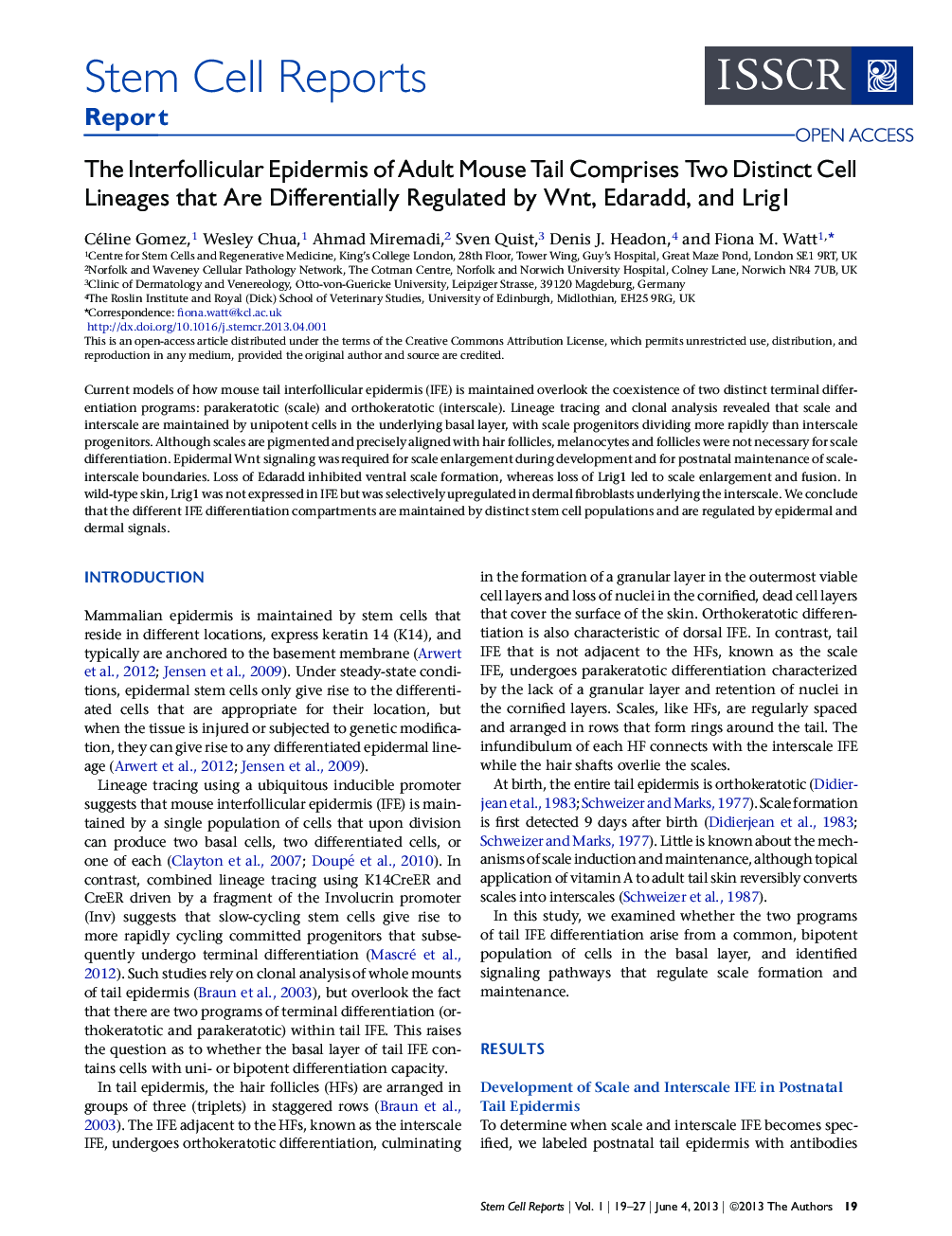| Article ID | Journal | Published Year | Pages | File Type |
|---|---|---|---|---|
| 2093860 | Stem Cell Reports | 2013 | 9 Pages |
•Tail interfollicular epidermis comprises two distinct differentiated lineages•The lineages are maintained by unipotent progenitors that differ in cell-cycle time•The lineages are independent of hair follicles and melanocytes•The lineages are regulated by Wnt, Edaradd, and Lrig1
Current models of how mouse tail interfollicular epidermis (IFE) is maintained overlook the coexistence of two distinct terminal differentiation programs: parakeratotic (scale) and orthokeratotic (interscale). Lineage tracing and clonal analysis revealed that scale and interscale are maintained by unipotent cells in the underlying basal layer, with scale progenitors dividing more rapidly than interscale progenitors. Although scales are pigmented and precisely aligned with hair follicles, melanocytes and follicles were not necessary for scale differentiation. Epidermal Wnt signaling was required for scale enlargement during development and for postnatal maintenance of scale-interscale boundaries. Loss of Edaradd inhibited ventral scale formation, whereas loss of Lrig1 led to scale enlargement and fusion. In wild-type skin, Lrig1 was not expressed in IFE but was selectively upregulated in dermal fibroblasts underlying the interscale. We conclude that the different IFE differentiation compartments are maintained by distinct stem cell populations and are regulated by epidermal and dermal signals.
Graphical AbstractFigure optionsDownload full-size imageDownload as PowerPoint slide
